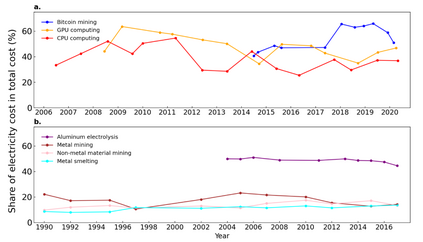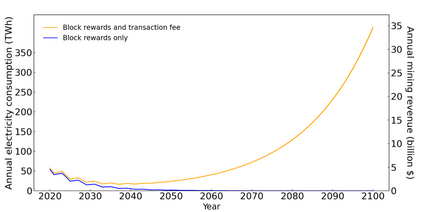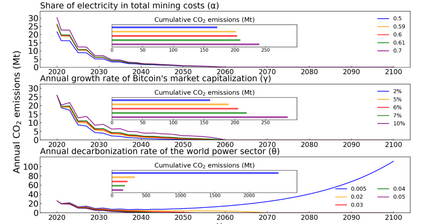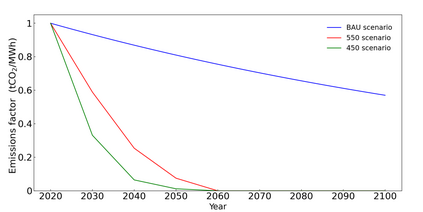The carbon footprint of Bitcoin has drawn wide attention, but Bitcoin's long-term impact on the climate remains uncertain. Here we present a framework to overcome uncertainties in previous estimates and project Bitcoin's electricity consumption and carbon footprint in the long term. If we assume Bitcoin's market capitalization grows in line with the one of gold, we find that the annual electricity consumption of Bitcoin may increase from 60 to 400 TWh between 2020 and 2100. The future carbon footprint of Bitcoin strongly depends on the decarbonization pathway of the electricity sector. If the electricity sector achieves carbon neutrality by 2050, Bitcoin's carbon footprint has peaked already. However, in the business-as-usual scenario, emissions sum up to 2 gigatons until 2100, an amount comparable to 7% of global emissions in 2019. The Bitcoin price spike at the end of 2020 shows, however, that progressive development of market capitalization could yield an electricity consumption of more than 100 TWh already in 2021, and lead to cumulative emissions of over 5 gigatons by 2100. Therefore, we also discuss policy instruments to reduce Bitcoin's future carbon footprint.
翻译:Bitcoin的碳足迹引起了广泛的注意,但Bitcoin的碳足迹对气候的长期影响仍然不确定。 我们在这里提出了一个框架,以克服先前估算和Bitcoin项目在Bitcoin的电力消费和碳足迹的长期不确定性。 如果我们假设Bitcoin的市场资本化增长与黄金的市场资本化一致,我们发现,Bitcoin的年电力消耗量在2020年至2100年间可能从60吨增加到400吨。Bitcoin的未来碳足迹在很大程度上取决于电力部门的去碳化路径。如果电力部门到2050年实现碳中和,Bitcoin的碳足迹已经达到顶峰。然而,在“一切照旧”的假设中,排放总量高达2千吨,到2100年,相当于2019年全球排放量的7%。 但是,2020年底Bitcoin的价格上涨表明,2021年市场资本化的逐步发展可以产生100吨以上TWh, 并导致到2100年超过5千兆吨的累计排放量。 因此,我们还讨论减少Bitcoin未来碳足迹的政策工具。












